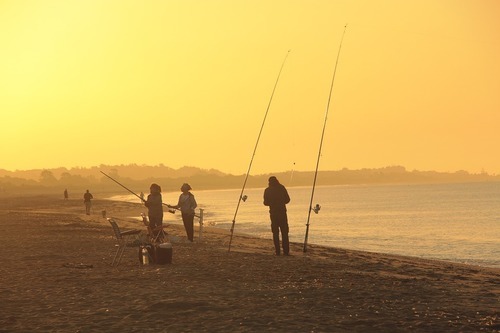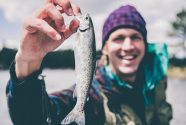
The Impact of Climate Change on Marine Fish Populations
As anglers, we have a deep connection to the water and the fish that live beneath the surface. We notice the subtle shifts, the changes in seasons, and maybe even changes in the fish we catch. Lately, it feels like those changes are becoming less subtle. Climate change isn’t just something happening in faraway polar regions; it’s affecting our favorite fishing spots right now.
Warming waters and shifting species
The most obvious change is ocean warming. Just like us, fish have preferred temperature ranges. As waters warm, many species are heading towards the poles or into deeper, cooler waters to stay comfortable. We’re seeing this play out globally. For instance, species like American lobster have shifted dramatically northward along the Atlantic coast, impacting traditional fishing grounds, as noted by researchers at WHOI. This isn’t just about fish moving; it’s about entire ecosystems changing.
Changes in timing matter too
It’s not just *where* fish are, but *when* they do things. Scientists call this ‘phenology’ – the timing of seasonal events like spawning or migration. Climate change is disrupting these natural rhythms. Warmer springs might trigger spawning earlier, but the food source young fish rely on, like plankton blooms, might not have caught up yet. This mismatch can drastically affect the survival rates of young fish, impacting future populations. Studies highlight how these timing changes ripple through the food web.
Not just warming
Warming isn’t the only stressor. Our oceans are also absorbing more carbon dioxide (CO2) from the atmosphere, leading to ocean acidification. Think of it like ocean osteoporosis – it makes it harder for shellfish like oysters and clams, as well as corals, to build their shells and skeletons. While direct impacts on adult finfish are still being studied, the effects on their food sources and habitats are undeniable. Furthermore, warmer water holds less dissolved oxygen, creating ‘hypoxic’ or low-oxygen zones. Fish need oxygen to survive, so these expanding dead zones can force them out of preferred habitats or worse.
These factors don’t act in isolation. Warming waters, lower oxygen, and changing acidity often occur together, creating a cumulative stress that makes it even harder for marine life to cope. Fish might be able to tolerate one change, but the combination can be overwhelming.
Other climate impacts hitting the water
Climate change also fuels more intense weather events. Stronger hurricanes and coastal storms can physically damage crucial habitats like coral reefs, mangroves, and seagrass beds – all vital nursery areas for countless fish species. Increased rainfall can lead to more runoff from land, carrying pollutants and excess nutrients into coastal waters, which can fuel harmful algal blooms and worsen low-oxygen conditions.
We’re also seeing shifts in nutrient availability. Recent findings suggest that changing ocean conditions could reduce the fundamental building blocks of the marine food web, potentially leading to smaller fish sizes and lower overall biomass, which the FAO confirms with projections of declining fish biomass in many regions.
What does this mean for fish and fishing?
The picture is complex. Some species might thrive initially in warmer waters or expand their range, but many others face significant challenges. Vulnerability varies; tropical species may be living closer to their thermal limits than temperate ones, making them particularly sensitive. We might see:
- Changes in the types of fish available in certain areas.
- Reduced fish sizes or abundance for some key species.
- Impacts on recreational and commercial fisheries, affecting livelihoods and local economies.
- Disruptions to the delicate balance of marine ecosystems.
Even within a species’ life, climate change can have effects. For example, research on Mangrove Jack shows how environmental conditions experienced early in life can influence their characteristics later on – something called ontogenetic shifts.
Adapting to the changes
So, what can be done? Fisheries managers are increasingly looking towards more holistic approaches. One key strategy is *Ecosystem-Based Fisheries Management (EBFM)*. Instead of managing one species at a time, EBFM considers the entire ecosystem – including habitat, predator-prey interactions, and climate impacts. For example, an EBFM plan might involve protecting critical nursery habitats like seagrass beds *and* setting fishing quotas for a target species, recognizing that both are connected. NOAA Fisheries is actively working on climate vulnerability assessments and incorporating climate change into management plans using these principles.
Other adaptation strategies include:
- Adjusting fishing quotas based on changing stock assessments.
- Protecting climate refugia – areas that may remain more stable.
- Developing more *selective fishing gear* that reduces bycatch (catching non-target species). Examples include using specific mesh sizes that allow smaller fish to escape, or devices like turtle excluder devices (TEDs) in shrimp nets.
- Restoring degraded habitats like oyster reefs or mangroves that buffer coasts and support fish.
As anglers, staying informed and supporting sustainable management practices is crucial. Understanding these changes helps us appreciate the challenges facing our fisheries and the importance of conservation efforts in a changing climate.




